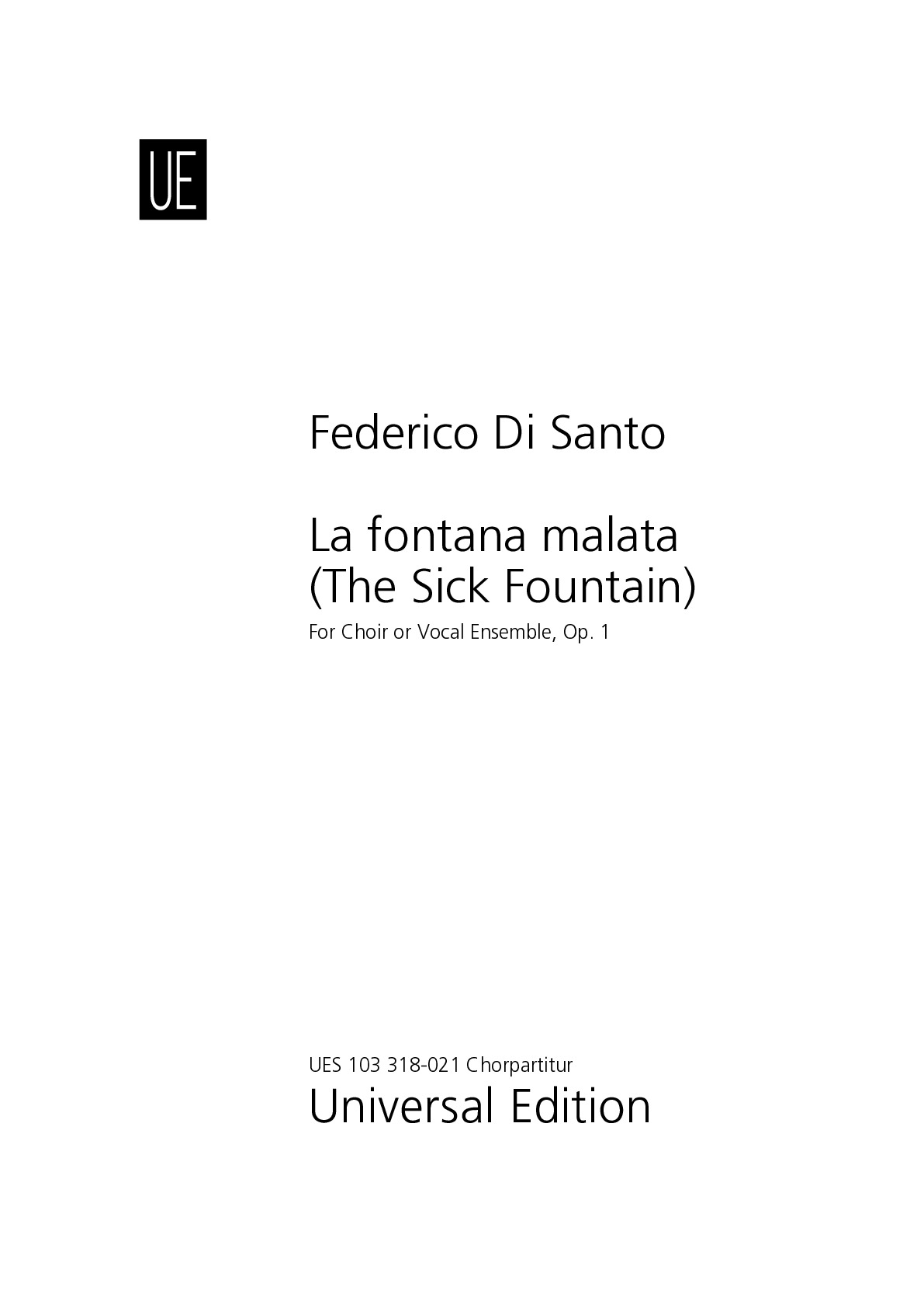.png)
Digital edition
immediately available as PDF
€16.95
Payments:
Shipping:
Federico Di Santo
gemischter Chor (La fontana malata (The Sick Fountain))
UESD103318-021
Type: digitale Chorpartitur
Format: 210 x 297 mm
Pages: 20
Digital edition
immediately available as PDF
€16.95
Payments:
Shipping:
Description
The piece, of medium difficulty and comic-grotesque character, can be performed by a mixed choir or alternatively by a vocal ensemble (SSAATTB), in the form of a madrigal. The doubling of the onomatopoeic parts by a small brass ensemble (2 trumpets, trombone, tuba) is optional: the piece can very well be performed a cappella. The text set to music is the poem "La fontana malata" (1909) by Aldo Palazzeschi, an author very close, at least in those years, to the Italian Futurist movement. It is a simple and light text, irreverent, grotesque and parodic compared to the major Italian poets of the time (D'Annunzio, Pascoli), written in very short versicles, most of which trisyllabic: it still enjoys a certain notoriety in Italy and is often present in school books and 20th-Century poetry anthologies. The subject is the tormenting and nerve-wracking dripping of a fountain, which disturbs the poet and gives occasion to introduce onomatopoeias that reproduce its annoying sound, in a parody of Giovanni Pascoli's phonosymbolism.
In keeping with the character of the text, the musical setting resorts to free atonality employed in a comic, bizarre and grotesque way, the closest models of which can be found in the vocal pieces of “Nonsense” (1952) by Goffredo Petrassi and of the “Nonsense Madrigals” (1988-93) by György Ligeti. The continuous alternation between verbal text and onomatopoeic sounds determines the general structure of the piece, in which the chorus (or the vocal ensemble) is treated by constantly dividing it into two semi-choirs: one of these sings imitating the dripping of the fountain on the onomatopoeic sounds ("clof, clop, cloch...") with short, sobbing notes of chaotic effect, possibly doubled by the brass; the other semi-choir, meanwhile, sets to music the bizarre lament of the poet unnerved by the dripping of water, stretching out in more extended and melodic musical phrases (which are however no less atonal). Over the course of the piece, these two distinct musical and dramatic roles of the male and female semichoruses interchange and contaminate each other in various ways, with brief imitations, homophonic moments, theatrical pauses, grotesque and comic effects (glissandi, sottovoce, etc.), depending on the suggestions of the text. The contrast between the two semi-choirs, which pervades the entire piece, is interrupted for a longer time only in two moments: when for a few seconds the dripping of the water is no longer heard and the poet thinks that the fountain has finally stopped dripping ("may it be dead?", mm. 24-31) and then when he decides to ask the servants, Habel and Vittoria, to go out and close the fountain: here a brief bitonal imitation in contrary motion (mm. 49-51) leads to a homophonic passage in the style of a chorale, with a pseudo- tonal harmonization, built on a progression of non-functional 7th and 9th chords. In the last part, however, the style becomes more contrapuntal-imitative, culminating in a narrow four-entry stretto (mm. 70 ff.) followed by a final comical shortened return of the onomatopoeic fountain part.
More information
Type: digitale Chorpartitur
Format: 210 x 297 mm
Pages: 20

